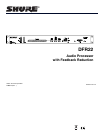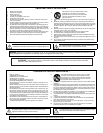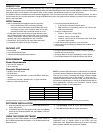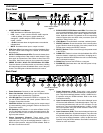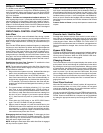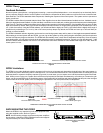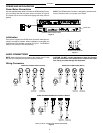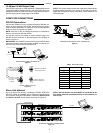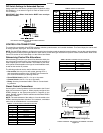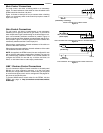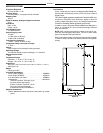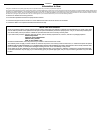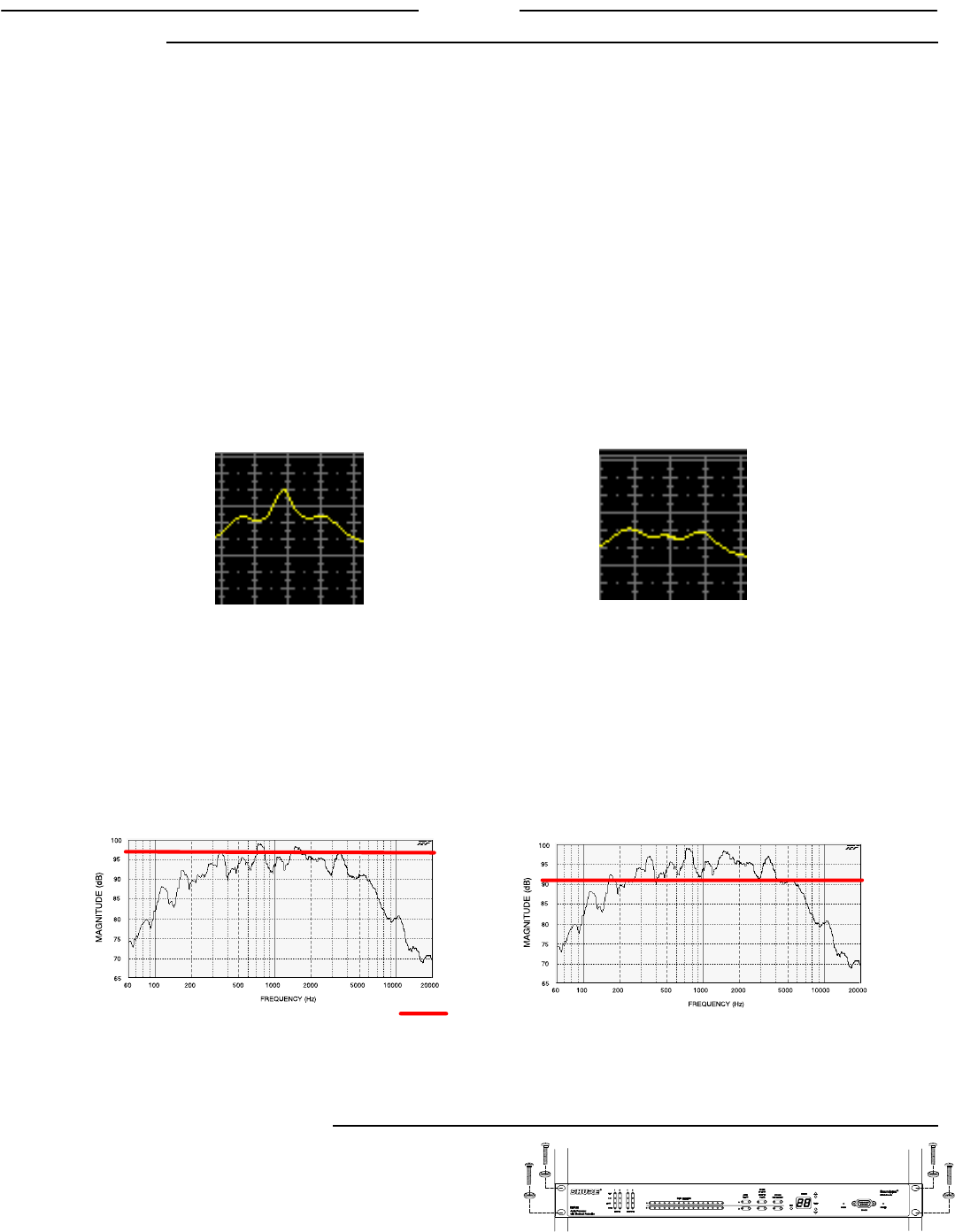
ENGLISH
4
DFR22 Theory
Feedback Reduction
No sound system (microphones + mixing/signal processing + power amplifiers/loudspeakers + room acoustics) has an absolutely flat fre-
quency response. When the level of a sound system is increased, the frequencies at which peaks occur will be the first to exceed the feed-
back threshold. The DFR22 attenuates these frequencies, flattening the response of the sound system. The system can then operate at a
higher overall level.
The DFR22 includes Shure’s patented Adaptive Notch Filter algorithm that can discriminate between feedback and non–feedback sounds.
When this algorithm detects feedback, it inserts a shallow, narrow filter into the audio path, reducing gain at the frequency that is feeding back.
(See Figure 3.) This filter is called a notch filter, since it affects a narrow section of the audio spectrum. If the feedback does not stop, the filter
depth is increased. By default, filters in the DFR22 are deployed as HIGH Q filters. As a High Q filter gets deeper, its Q increases up to a Q of
101 (1/70th of an octave). Using the DFR22 software, you can also set filters to deploy as LOW Q. Low Q filters affect a slightly wider range of
frequencies by maintaining a Q of 14.42 (1/10th of an octave) as they deepen. By default, the DFR22 can insert up to 16 notch filters per
channel to reduce feedback.
The DFR22’s feedback reduction algorithm can be used as a tool during system setup and for peace of mind against unexpected feedback.
When setting up a sound system with the DFR22, you can ring out the system by slowly raising the gain while talking into the microphones
until the first frequency begins to feed back. The DFR22 will automatically insert a notch filter to attenuate that frequency. Once the system
stops feeding back, you can further raise the level and repeat the process for additional frequencies. Typically, you can raise the gain 3 – 9 dB
above the level at which feedback first occurred. You should leave some filters available to catch feedback that might occur later, when the
sound system is in use.
Measured Frequency Response with Peak Measured Frequency Response with Notch Filter Added
EFFECTS OF NOTCH FILTER ON FREQUENCY RESPONSE
Figure 3
DFR22 Limitations
The DFR22 (or any other feedback reduction processor) will not let you to increase gain beyond the physical limits of the sound system. In
most cases, the point of diminishing returns is reached once 5 to 8 notch filters have been set. This is because there are usually only a few
dominant peaks in a system’s frequency response (Figure 4A). In most cases, you can expect a 6 to 9 dB improvement in gain-before-feed-
back. When you are ringing out a system and notice that many frequencies feed back simultaneously, even when you increase the gain
slowly, you have reached the point of diminishing returns. If the system still has insufficient gain before feedback at this point, other changes
must be made to the sound system, such as changing the placement of the microphones and/or loudspeakers.
Figure 4A Figure 4B
= Feedback Threshold
Use notch filters to lower peaks Lower overall system gain
FREQUENCY RESPONSE OF AN UNEQUALIZED SOUND SYSTEM
Figure 4
RACK MOUNTING THE DFR22
Mount the DFR22 in any standard 19-inch audio equipment rack,
using the supplied screws. Refer to Figure 5.
NOTE: Avoid mounting wireless equipment and power amplifiers
directly above or below the DFR22. Additional rack mount supports
may be necessary for mobile installations.
RACK MOUNTING THE DFR22
Figure 5



